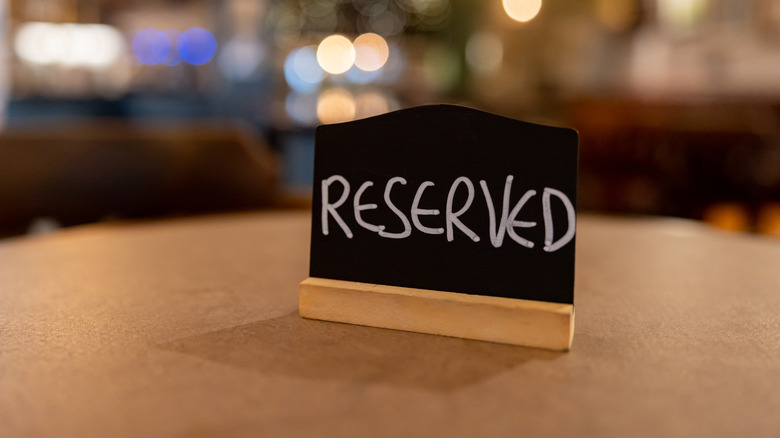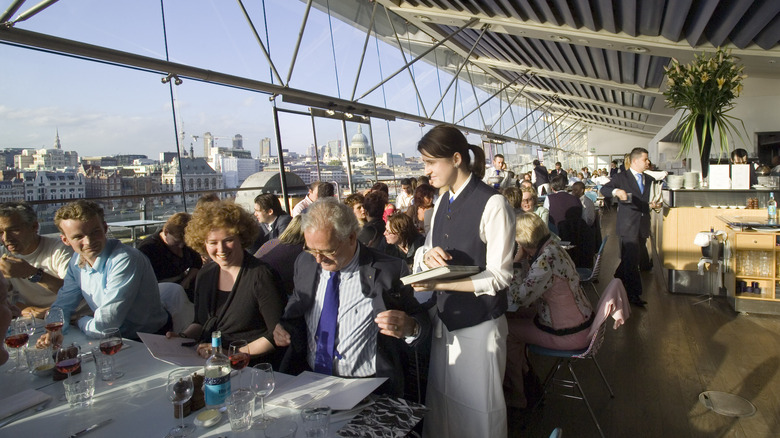Why Reservation Fees Are On The Rise For Many Restaurants
If you're trying to enjoy a meal at your area's hottest restaurant these days, reservations sometimes feel like a must. But those who've gone to book them may have noticed another trend — an increase in the frequency and cost of reservation fees.
These fees are a reaction to the large and growing level of no-shows many restaurants are dealing with, a dining faux pas that OpenTable data shows more than 1 in 4 Americans have been guilty of in the recent past. Unfortunately, most restaurants are running on more narrow margins than ever, thanks to increased costs for ingredients and labor. This means just six people not showing at a restaurant that typically serves 120 guests per night can be enough to turn a profitable night into a loss. This is why always calling ahead to cancel if you can't make your reservation ranks as the top restaurant reservation rule Food Network star Ted Allen says you should never break. For those who don't, the deposits and fees paid in advance can help offset some of the lost profits.
Big advantages for struggling restaurants
The fees, which are often charged through third-party services such as OpenTable, Resy, and Tock, range from nominal non-refundable fees designed to weed out bots and scalpers to more significant $25 to $50 deposits, which are often applied to the final bill if guests show up.
Reservation fees are also gaining popularity in comparison to the no-show fee, which charges customers who don't show up — but only after they miss their timeslot. These fees can be subject to additional chargebacks from upset diners, which are expensive and time consuming for restaurants to fight. If you've plunked down money for a reservation you suddenly can't make, all may not be lost. Depending on the restaurant's policy and how much time is left before your slot, it may be possible to get a full or partial refund by reaching out directly to explain the situation.
If you're still having trouble locking down a reservation despite the changes, try shifting your dining time to one chef's best time to eat at a restaurant.

